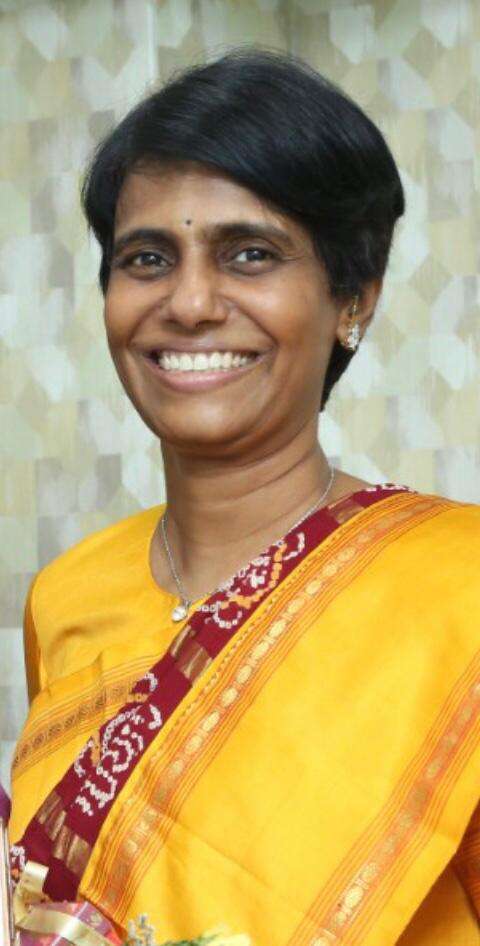Need-based innovations happen overnight in India: Padmashri Dr. Manjula Anagani – ET HealthWorld
 In an interaction with ETHealthworld, Dr. Manjula Anagani, Clinical Director and Head of the Department, Obstetrics and Gynaecology, Care Hospitals, Hyderabad elucidates on the newer techniques in minimally invasive surgery and innovative Neovagina Creation, which is of shortest OR time, less painful . Edited excerpts :
In an interaction with ETHealthworld, Dr. Manjula Anagani, Clinical Director and Head of the Department, Obstetrics and Gynaecology, Care Hospitals, Hyderabad elucidates on the newer techniques in minimally invasive surgery and innovative Neovagina Creation, which is of shortest OR time, less painful . Edited excerpts :
Q. Can you tell us about the latest developments in the minimally invasive surgery segment? How are the latest newer techniques in this segment helping women-related issues?
Healthcare necessities and innovations go hand in hand. Every surgery which used to done by the open technique can now be done by minimally invasive surgery except of course delivering a child. Developments happened in both techniques, technology, and as the demand for MIS increased, training facilities improved and learning curves have come down. With the increasing incidence of endometriosis and fibroids – newer techniques in MIS made a huge impact on the quality of life of the lady by avoiding open surgeries and minimising the recurrence which was a norm before.
Q. What made you initiate technology like primary amenorrhea (absent menstrual cycles) and Neovagina. How much it has helped women in India. Any statistics?
Young girls come to us with primary amenorrhoea- they are stressed as they consider themselves as being “different”, scared as to what is happening with them, depressed as to their future treatments and outcomes. When they are told they do not have a uterus, cervix, and vagina – the whole family is shattered. Once we counsel the family regarding uterine transplant and its associated complications and surrogacy as far as pregnancy is concerned, the majority opts for surrogacy. That leaves us with Neovagina Creation to allow the patient to have a happy marital life. Traditionally, the techniques used were Pressure Dilatation Techniques and Plastic Surgical Techniques. In plastic surgical, it was Abbe Mc- Indoe’s technique or its modifications. The need of the day was technique, which is of least morbidity, shortest OR time, cosmetic, less painful with ease of maintaining the vagina created, normal sexual life, and orgasm. That’s when – the Anagani technique originated, which used Interceed, the adhesion prevention barrier on a soft mould created. It is an MIS that takes < 10 mts, does not need any grafts, and no scars on the body with maximum patient satisfaction in terms of maintenance of Neovagina created. Few of them had their biological children by surrogacy.
We have helped more than 100 girls coming to us with primary amenorrhoea and the technique which was demonstrated in operative workshops helped many gynecologists all over to do the procedure.
Q. In these days of pandemic restrictions what are the challenges you face in treating expectant mothers?
Stay home, stay safe. This was the anthem of the pandemic. It had its challenges. Fewer visits were advocated and online consultations made the personal touch difficult and sometimes missing the objective checks of fetal growth and BP. Secondly, the difference in recommendations, permissions as far as COVID vaccinations created confusion as to the advocacy. Thirdly the panic of COVID infections and difference of opinions regarding the drugs to be used and not to be used, admissions versus isolation created distrust. A lot of social media exposure and differing opinions by the experts created even more confusion.
Q How has the pandemic reinstated the benefits of cord blood harvesting and what are the benefits of the procedure? What are the extra precautionary steps being taken for the collection and storage of cord blood in the wake of the pandemic?
This pandemic has clearly shown us the importance of good health. While earlier when investment in health was not considered the first priority, the pandemic has forced people to rethink this aspect.
Also, earlier these disorders were considered to be rare however, due to the associated serious infection of COVID in cancer and other patients, expecting parents have started considering the benefits of cord blood banking especially when stored in community stem cell banking it not only provides protection for the child but for the entire family.
There has been appropriate training given to the paramedical staff where the importance of safety and precaution has been emphasized keeping in mind the wellbeing of mother and baby during childbirth. There are restrictions on the entry of the collection team inside the OT or labour room. Hence in tandem with medical staff, the paramedics ensure a smooth collection of cord blood at the lab where there is a protocol that ensures hygiene and safety within the team and the operating rooms.
Q. What is the procedure for mothers who have tested positive during pregnancy and labour? Can they still store their baby’s cord blood?
There are numerous studies that indicate that COVID-19 infection does not pass to the baby during pregnancy. Only antibodies get transferred which is actually beneficial for the baby and is also safe to store the cord blood.
Q. Laparoscopy being an aerosol-forming procedure has a risk of Sars Cov2 transmission. Many medical associations recommend this procedure not to be the first choice. Your thoughts?
Need-based innovations happen overnight in India. First – a mandatory RTPCR for all elective surgeries and N-95 mask, respirators are a must. We came up with our own underwater seals for the escape of pneumoperitoneum at every step of the procedure. When we take precautions and do the procedures, we can save the patients from morbidity and ourselves from Sars Cov2.
For all the latest Health News Click Here
For the latest news and updates, follow us on Google News.
